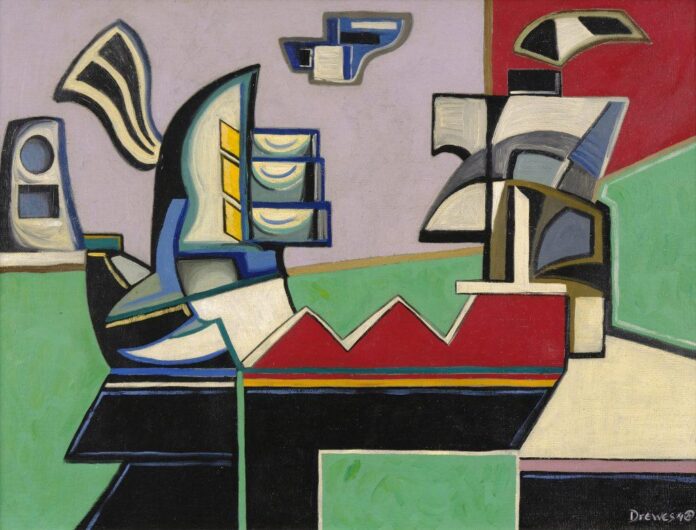What You Need to Know: Opening September 15, 2023, Addison Rowe Gallery in Santa Fe, New Mexico, will present the exhibition “Werner Drewes: And His Influence on Geometric Abstraction.” Featuring paintings by Drewes from his early career alongside stylistically similar artists’ work from a similar time, the show is an homage both to Drewes and his influence as well as the origins of 20th-century geometric abstraction. Juxtaposing works by Drewes and with his counterparts from the period, the exhibition delves into the nuances of the geometric abstraction as well as the American abstract movement on the whole. On view through October 27, 2023, the forthcoming exhibition is exemplary of the gallery’s specialty in significant 20th century artists and art movements—and provides an opportunity for visitors to immerse themselves in this singular art historical development.
About the Artist: Werner Drewes (1899–1985) was born in Canig, Germany, what is now part of modern-day Poland. Drewes showed a talent for art making at an early age, and following time spent serving in the German army in World War I, he spent a decade learning about and making art, as well as travelling extensively. In 1921, he enrolled at the historically acclaimed Bauhaus school, studying with Johannes Itten and Lyonel Feininger, and Paul Klee. During his time as a student, he created a suite of woodblock prints collectively known as “Ecce Homo.” His studies, however, did not curb his travels, and during the 1920s he travelled both across the continent as well as in the United States before returning to Bauhaus—now in Dessau—in 1927, where he further studied under László Moholy-Nagy and Wassily Kandinsky. With the rise of the Nazi party and increasing oppression, in 1940 Drewes immigrated to the United States. Steeped in the interwar artistic milieu of Europe and exposed to the burgeoning abstract movements of the United States at the time, Drewes developed a distinct style of abstraction. His early work embodied the angular, color fields that came to define geometric abstraction—and ultimately inspired and influenced artists worldwide.
According to the Gallery: “This show represents my love of abstraction and geometric compositions from the early concepts developed by the artists of the Bauhaus as it traveled to Post World War II—artists exploring pure color and form. The theories and concepts developed by those early artists has grown and changed over time and the artists have continued to show how dynamic and exciting abstract art can be.”—Victoria Addison
See featured works from the exhibition below.

Werner Drewes, (1945). Courtesy of Addison Rowe Gallery, Santa Fe.

Werner Drewes, (1948). Courtesy Addison Rowe Gallery, Santa Fe.

Ed Garman, (1972). Courtesy of Addison Rowe Gallery, Santa Fe.

Rolph Scarlett, (n.d.). Courtesy of Addison Rowe Gallery, Santa Fe.

Charles Green Shaw, (n.d.). Courtesy of Addison Rowe Gallery, Santa Fe.

























